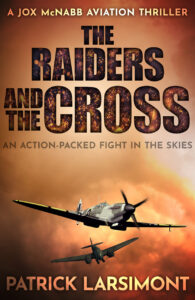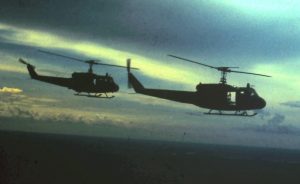Following the success of his many military thrillers, including the Vietnam Ground Zero Series and Wings Over Nam aviation thrillers, we are delighted to announce that we have signed a new historical military series by Eric Helm.
In Eric’s words:
“At the end of the 1980s and at the beginning of the 1990s, the world moved close to a world war that could easily escalate into a thermonuclear exchange that would end modern civilization. There were those who wished for nothing more because they believed it would thrust them to the top and in control of the world. And there were those who wanted to prevent that. Their purpose wasn’t always altruistic, but that goal matched their own climb to power. It is into this world that the characters in this series move, serving on every continent and sailing all the oceans, dealing with those problems.
“The characters are military and civilian, members of the media, and those with an academic frame of mind. Each brings an interesting take to the problems of trying to prevent a world war, except for one nation whose leaders believe such a conflict would benefit them. These are unique situations that require unique solutions. This is a tale told on the world stage with players at nearly every level of society.
“Sapere Books have been very good to me. The packaging of my Vietnam Ground Zero series has been perfect. The enthusiasm with which the books have been received has been wonderful. Sapere is a great publisher who have looked out for my best interests. Everyone seems to be excited by the various projects that I have suggested and there is no pressure to crank out a book quickly. They let it evolve naturally, which I believe makes the books that much better.”
Congratulations to Tony Rea, whose thrilling fighter pilot adventure, Bouncer’s Blenheim, is published today!
Bouncer’s Blenheim is the second book in the Gus Beaumont Aviation Thrillers series: action-packed military novels set during the Second World War.
Europe, 1940
After surviving the Battle of Britain, fighter pilot Gus ‘Bouncer’ Beaumont has been promoted to Flying Officer and is posted to a Spitfire reconnaissance squadron.
That is, until Wing Commander Peacock creates another mission for him.
A new top-secret unit called the Special Operations Executive has been formed to gather intelligence on the enemy. And Gus is ordered infiltrate the Greek Resistance and establish their political affiliation.
Mussolini’s army have occupied Greece but the locals have been fighting back. The actions of the civilians seem promising and British Intelligence want to know where the Greeks’ allegiance lies.
To have a chance of success, Gus needs to ditch his plane into the sea and get picked up by the Resistance fighters.
But that is easier said than done … if you want to survive the crash.
Will Gus make it to Corfu in one piece? Can he persuade the Resistance fighters to confide in him?
And can he successfully evade the Italian army…?
Congratulations to Tony Rea, whose fighter pilot adventure, Bouncer’s Battle, is published today!
Bouncer’s Battle is the first book in the Gus Beaumont Aviation Thrillers series: action-packed military adventure novels set during the Second World War.
England, 1939
When Gus Beaumont completes his training in June 1939, he is given the nickname ‘Bouncer’ for his less than smooth landings.
Despite that, he is an excellent flyer, and his Polish-British heritage inspires the secretive Wing Commander Sir Alexander Peacock to set him on a mission.
The British are aware that Poland is likely to fall to Germany and they are desperate to get the Polish fighter pilots to safety beforehand so they can continue fighting against the Reich.
Gus’s cousin, Staś Rosen, is a Polish fighter pilot and Gus is sent to persuade him to pass the message on to those in charge.
By the time Gus returns to England, war has been declared, and after some tough battles against the Luftwaffe, Staś manages to escape from Poland.
Gus is jealous of Staś’s tales of adventures as he finds himself once more stuck in training, and failing to see any action.
But all that will change when Gus is sent to fight in the Battle of Britain…
Can Gus ‘Bouncer’ Beaumont make his mark? Will he find himself fighting alongside his cousin?
Or will the realities of war prove to be more than he can handle…?
Congratulations to Patrick Larsimont, whose thrilling World War II adventure, The Raiders and the Cross, is out now!
The Raiders and the Cross is the second book in the Jox McNabb Aviation Thrillers series: action-packed, authentic historical adventures following a young RAF pilot during the Second World War.
Winter, 1940
Enemy raiders are bombing Britain’s cities relentlessly. Casualties are high and morale is at an all-time low.
Jox McNabb and the rest of No.111 Squadron train to become night fighters to take on the raiders inflicting such carnage on Britain’s cities.
But then tragedy strikes and Jox is devastated by the loss of those close to him.
Scarred physically and emotionally, he recovers slowly. Seeking a fresh start, he volunteers to serve in the turbulent skies of besieged Malta.
But this new location quickly becomes just as dangerous as the last.
Can Jox forget the tragedy that haunts him? Will he survive the murderous assault of the Luftwaffe?
And can a desperate Malta withstand the relentless onslaught?
Congratulations to Justin Fox, whose thrilling wartime adventure, The Wolf Hunt, is out now! The Wolf Hunt is the second book in the Jack Pembroke Naval Thriller series.
1941
Lieutenant Jack Pembroke has found a new home and new love at the Cape, but it will all hang in the balance with the arrival of the enemy in South African waters.
With the Mediterranean all but closed to maritime traffic, and Rommel’s forces rampaging through North Africa, this sea route is vital to supplying the Allied forces in Egypt.
But German U-boats have been sent by Admiral Donitz from their bases on the west coast of France to cripple the convoy route.
Jack is put in command of a small anti-submarine flotilla in the Royal Navy base of Simon’s Town, South Africa.
But he has very little time to train his officers and men, and prepare his ships, for the arrival of the Nazi wolf packs.
With the Cape under attack, Jack has to escort a vital convoy from Cape Town to Durban.
But with the enemy U-boats lying in wait in the storm-ravaged waters, he’ll be luck to make it out alive…
The Scorpion Squad Military Thrillers follow an American Battalion fighting in the Vietnam War. Below, Kevin D. Randle (Lt. Col. USAR) — one of the authors behind the pseudonym Eric Helm — reflects on the real-life experiences that provided the inspiration for the series.
I graduated high school the day before my 18th birthday in June 1967. In July, I was on a bus headed to Fort Polk, Louisiana, for basic  infantry training and in October, I was assigned to Fort Wolters, Texas, for my AIT, advanced individual training, which was as a helicopter pilot. From there I was sent to Fort Rucker, Alabama, to complete that training. In August 1968, as a 19-year-old teenager, I was appointed a warrant officer and then graduated from flight school as a helicopter pilot.
infantry training and in October, I was assigned to Fort Wolters, Texas, for my AIT, advanced individual training, which was as a helicopter pilot. From there I was sent to Fort Rucker, Alabama, to complete that training. In August 1968, as a 19-year-old teenager, I was appointed a warrant officer and then graduated from flight school as a helicopter pilot.
On September 23, 1968, I arrived in South Vietnam. We landed at Ton Son Nhut and were herded aboard buses that had no air conditioning. We all were covered with sweat within minutes of leaving the aircraft. The bus had screens over the open windows, but the pattern was something like an inch square. It wouldn’t keep out the insects. Someone said it was to keep out the grenades, and someone else said, “Yeah. Now they tie fishhooks to them.”
From Saigon we drove to Bien Hoa, Long Binh complex and the 90th Replacement Battalion. From there, a day or two later, I, with three other warrant officers, was assigned to the 116th Assault Helicopter Company at Cu Chi.

Kevin Randle after a day of flying combat assault missions in Vietnam.
During that first week, I flew rarely. There was an orientation flight to show me the local area. There was a check ride to ensure that I knew what to do if the engine quit, and to demonstrate my other skills. When that was completed, I was assigned to a flight, and then began flying combat assault missions. That meant that we picked up soldiers in one place, took them to another and landed. While many of those missions were without incident, some of them were more than a little exciting. Nothing beats sitting in a pick-up zone to evacuate soldiers while the enemy pumps small arms fire into the flight. You’re sitting in a plexiglass encased cockpit, easily visible to the enemy and have no recourse but to sit there as the windshields break and the instrument panel disintegrates.
One of the first night missions I flew, as what was known as a peter pilot, meaning that I was the co-pilot, was into an PZ we knew was going to be hot. The soldiers were taking fire and we were going to extract them. There were tracers flying all over the place. Red ones from our weapons and green and white ones from the enemy. They dropped a few mortars on us as well, which erupted into a shower of sparks and had that been just a little more colourful, it would have looked like fireworks.

Flying formation on the way to a combat assault.
Everyone took some hits, but most of the damage was superficial. One of the aircraft, if I remember correctly, was left in the PZ. The engine had been hit and failed. The crew was picked up by another aircraft, which means that they abandoned the aircraft and ran to one of the others. The gunships, which had been working over the tree lines and enemy positions, took it out with rockets, setting it on fire to prevent the enemy from getting anything of value from it.
We were on the ground for thirty seconds to one minute as the soldiers scrambled onto the helicopters. Our door gunners and crew chiefs used their M-60 machines in an attempt to suppress the enemy fire. They aimed at the muzzle flashes of the enemy weapons.
That was the last flight that night. Once we had the soldiers out, I suspect the Air Force might have dropped some ordnance on the enemy positions, or the artillery might have dropped a few rounds on them. I really don’t know. Once we dropped off the soldiers, we were released and returned to Cu Chi so that maintenance could patch up the aircraft.

